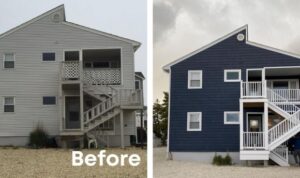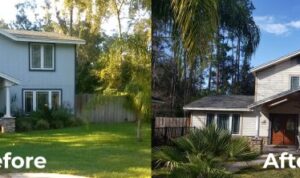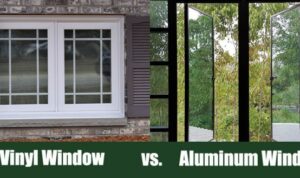Embark on a journey into the world of architectural interior design, where creativity meets functionality in the most captivating way. From the fundamental principles to the latest trends, this guide is your key to unlocking the secrets of creating stunning interior spaces.
Overview of Architectural Interior Design
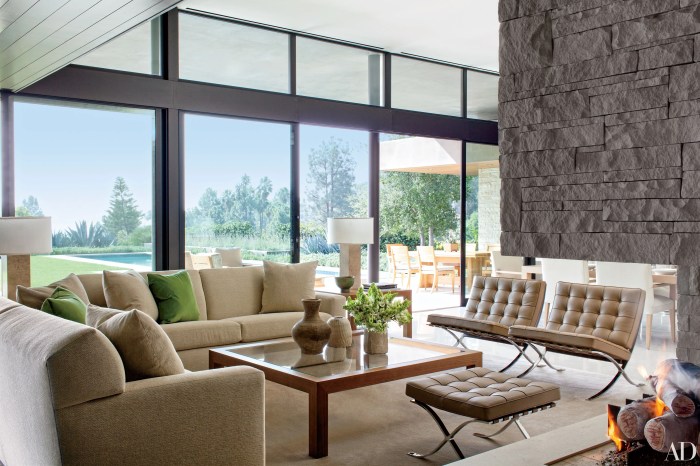
Architectural interior design is a specialized branch of interior design that focuses on creating functional and aesthetically pleasing spaces within a building. It involves the planning, designing, and furnishing of interior spaces to enhance the overall architectural design of a structure.
Key Elements of Architectural Interior Design
Architectural interior design encompasses several key elements that contribute to the success of a project:
- Space Planning: Efficient utilization of space to ensure optimal functionality and flow within a room or building.
- Color Palette: Selection of appropriate colors to create a harmonious and cohesive atmosphere.
- Lighting Design: Strategic placement of lighting fixtures to enhance the mood and functionality of a space.
- Material Selection: Choosing the right materials for flooring, walls, and furniture to achieve the desired aesthetic and functionality.
- Furniture Layout: Arranging furniture in a way that maximizes space and promotes comfort and usability.
Importance of Balancing Functionality and Aesthetics
One of the key principles of architectural interior design is striking a balance between functionality and aesthetics. While the design should be visually appealing, it must also meet the practical needs of the occupants. A well-designed interior not only looks beautiful but also enhances the quality of life for those who inhabit the space.
Principles of Architectural Interior Design
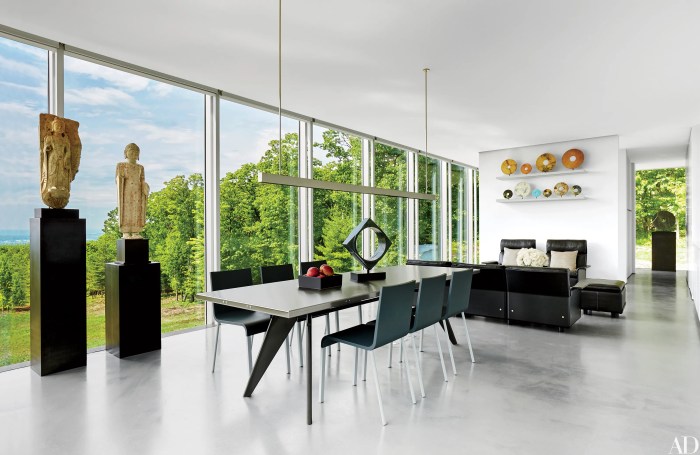
When it comes to architectural interior design, several fundamental principles play a crucial role in creating functional and visually appealing spaces. These principles include proportion, balance, rhythm, emphasis, and harmony. Let's delve into how these principles guide the design process and distinguish architectural interior design from general interior design.
Proportion
Proportion in architectural interior design refers to the relationship between various elements in a room. It involves ensuring that the size, scale, and shape of furniture, fixtures, and decorative elements are balanced and harmonious. For example, a room with oversized furniture in a small space may feel cramped and unbalanced, while a well-proportioned room creates a sense of harmony and coherence.
Balance
Balance is about distributing visual weight evenly in a space. There are three types of balance: symmetrical, asymmetrical, and radial. Symmetrical balance involves placing identical elements on either side of a central axis, creating a sense of formality and order.
Asymmetrical balance, on the other hand, involves arranging different elements with varying visual weights to achieve equilibrium. Radial balance revolves around a central point, with elements radiating outward in a harmonious manner.
Rhythm
Rhythm in architectural interior design refers to the visual flow and movement within a space. It can be achieved through repetition, progression, or contrast of elements. For example, repeating a particular color or pattern throughout a room creates a sense of continuity and cohesion, while a gradual progression of sizes or shapes can lead the eye smoothly from one area to another.
Emphasis
Emphasis is about creating focal points in a room to draw attention and create visual interest. This can be achieved through accent walls, statement furniture pieces, or unique lighting fixtures. By strategically placing emphasis on certain elements, designers can guide the viewer's gaze and create a dynamic and engaging space.
Harmony
Harmony is the overarching principle that brings all the other elements together cohesively. It involves ensuring that all design elements work together in a unified and consistent manner. From color palettes to materials to furniture styles, achieving harmony in architectural interior design results in a well-balanced and aesthetically pleasing space.In real-world interior design projects, these principles are applied in various ways to create spaces that are not only beautiful but also functional and comfortable for the occupants.
Designers carefully consider proportion when selecting furniture and fixtures, strive to achieve balance through thoughtful placement of elements, create rhythm through the repetition of patterns or textures, establish emphasis through focal points, and maintain harmony by ensuring all design choices complement each other.
By following these principles, architectural interior designers can transform ordinary spaces into extraordinary environments that delight and inspire.
Elements of Architectural Interior Design
Architectural interior design involves a combination of various elements that work together to create a cohesive and well-designed interior space. These elements include lighting, color schemes, materials, furniture, and spatial planning.
Lighting
Lighting plays a crucial role in architectural interior design as it can significantly impact the mood and functionality of a space. Proper lighting design involves a mix of natural and artificial light sources to create a balanced and inviting atmosphere.
Color Schemes
Color schemes are essential in setting the tone and style of a space. Different color combinations can evoke different emotions and affect the overall feel of a room. Careful selection of colors is necessary to achieve the desired aesthetic.
Materials
The choice of materials in architectural interior design can greatly influence the look and feel of a space. From flooring to wall finishes, the selection of materials such as wood, metal, glass, and fabrics can impact the overall design aesthetic and functionality.
Furniture
Furniture selection is crucial in creating a functional and visually appealing interior space. The choice of furniture pieces should complement the overall design concept while providing comfort and practicality.
Spatial Planning
Spatial planning involves the layout and arrangement of furniture, fixtures, and architectural elements within a space. Proper spatial planning ensures that the flow of the space is functional, efficient, and aesthetically pleasing.
Trends in Architectural Interior Design
Architectural interior design is constantly evolving, with new trends shaping the way spaces are designed and experienced. Some of the current trends in architectural interior design include sustainable design, biophilic design, smart home technology integration, and the rise of flexible workspaces.
These trends are not only influencing the aesthetics of interior spaces but also impacting the functionality and overall experience for users.
Sustainable Design
Sustainable design has become a major focus in architectural interior design, with a growing emphasis on using eco-friendly materials, energy-efficient systems, and sustainable practices. Designers are incorporating elements like recycled materials, natural light, and green walls to create healthier and more environmentally friendly spaces.
Biophilic Design
Biophilic design seeks to connect people with nature within the built environment. This trend involves incorporating elements like natural textures, colors, and patterns, as well as integrating living plants and greenery into interior spaces. Biophilic design has been shown to improve overall well-being, productivity, and creativity in indoor environments.
Smart Home Technology Integration
The integration of smart home technology is revolutionizing how interior spaces are designed and experienced. From automated lighting and temperature control to voice-activated assistants and smart appliances, technology is being seamlessly integrated into the design of homes and commercial spaces, enhancing convenience, comfort, and efficiency.
Flexible Workspaces
With the rise of remote work and flexible schedules, there is a growing demand for versatile and adaptable workspaces. Architects and interior designers are creating environments that can easily be reconfigured to meet changing needs, with modular furniture, movable partitions, and multi-functional spaces that support collaboration, concentration, and creativity.
Case Studies in Architectural Interior Design
In this section, we will explore notable architectural interior design projects from around the world, analyzing the design concepts, materials used, and spatial layouts of each project. We will also discuss the success factors and challenges faced in implementing architectural interior design in these projects.
The Louvre Abu Dhabi
The Louvre Abu Dhabi is a stunning architectural interior design project located in the United Arab Emirates. Designed by architect Jean Nouvel, this museum showcases a unique blend of modern design and traditional Arabic architecture. The use of natural light, intricate geometric patterns, and a mix of materials such as steel and glass create a harmonious and visually striking space.
The challenge faced in this project was creating a design that respects both the local culture and the global significance of the Louvre brand.
The High Line Hotel, New York City
The High Line Hotel in New York City is a prime example of adaptive reuse in architectural interior design. Housed in a former seminary building, the hotel retains many of its original architectural features such as stained glass windows and wooden beams.
The design concept focuses on preserving the historic character of the building while introducing modern amenities and stylish decor. The success factor in this project was the ability to blend old and new seamlessly, creating a unique and charming atmosphere for guests.
The Eden Project, Cornwall
The Eden Project in Cornwall, UK, is a remarkable architectural interior design project that showcases the beauty of sustainable design. The iconic biomes, made from ethylene tetrafluoroethylene (ETFE) cushions, create a visually stunning and environmentally friendly space. The challenge faced in this project was creating a structure that could house diverse plant species from around the world while maintaining a comfortable climate for visitors.
The success of the Eden Project lies in its innovative design that educates and inspires visitors about the importance of conservation and biodiversity.
Ending Remarks
In conclusion, architectural interior design blends artistry with practicality, shaping spaces that inspire and delight. As you delve deeper into this realm, you'll discover endless possibilities for transforming any environment into a work of art.
Questions Often Asked
What is architectural interior design?
Architectural interior design focuses on creating functional and aesthetically pleasing interior spaces within architectural structures, blending elements of architecture and interior design seamlessly.
How do architectural interior design principles differ from general interior design principles?
Architectural interior design principles emphasize the relationship between interior spaces and the overall architectural structure, focusing on harmony and cohesion with the building's design.
What are some current trends in architectural interior design?
Current trends include sustainable design practices, integrating smart home technologies, incorporating biophilic design elements, and creating flexible workspace environments.

